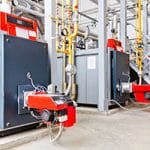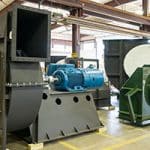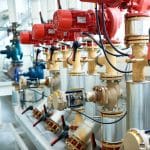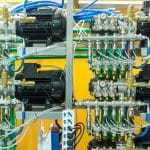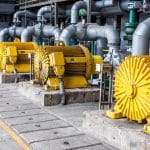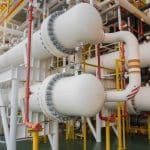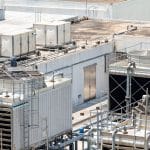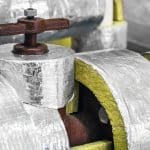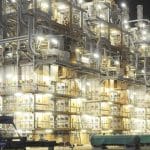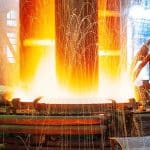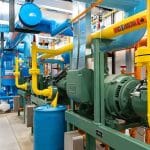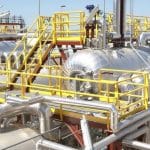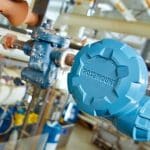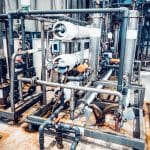The 3 kEys
- One of the simplest yet most effective ways to minimize idle time is by integrating intelligent scheduling systems that align dryer availability with upstream and downstream processes.
- Overloading can cause airflow restrictions, leading to uneven drying, longer cycle times, and increased energy consumption. Conversely, underloading results in excessive energy use per unit of product due to inefficient heat transfer.
- Modifying internal air distribution using CFD analysis can generate as much as 20% increases in drying efficiency by ensuring uniform heat exposure across the product.
Industrial dryers are indispensable in manufacturing, yet they remain among the most energy-intensive pieces of equipment on the factory floor. Facilities Managers seeking to reduce operating costs have a number of low to no-investment strategies available to them, in the interest of enhancing dryer efficiency, and reducing expense.
This article delves into the intricacies of batch optimization, reducing idle time, optimizing airflow, and optimizing feed uniformity, with a couple of case studies and research findings that illustrate the principles presented.
Batch Optimization: Maximizing Throughput Without Energy Waste
Optimizing batch sizes is not just about loading a dryer to capacity—it requires a deep understanding of thermal dynamics and material properties. Overloading can cause airflow restrictions, leading to uneven drying, longer cycle times, and increased energy consumption. Conversely, underloading results in excessive energy use per unit of product due to inefficient heat transfer.
A study published in Powder & Bulk Solids titled Increasing Dryer Efficiency describes how modifying load sizes in batch dryers based on real-time monitoring led to a 15% reduction in energy use per ton of product. By using moisture sensors and predictive control algorithms, facilities can dynamically adjust batch sizes to optimize drying efficiency. The study found that implementing these adjustments not only reduced drying time but also improved product consistency.
Additionally, Facilities Managers can experiment with different load compositions to find the optimal balance. Research conducted on grain drying systems showed that adjusting the material’s depth and spread in reversible airflow dryers significantly improved moisture uniformity while cutting drying times by up to 20%. See ResearchGate’s Development and Promotion of the Reversible Airflow Flatbed Dryer.
Reducing Idle Time: Intelligent Scheduling and Preloading Techniques
Idle time occurs when dryers operate without actively processing material, wasting valuable energy. One of the simplest yet most effective ways to minimize idle time is by integrating intelligent scheduling systems that align dryer availability with upstream and downstream processes.
A case study on spray drying operations found that improper homogenization of feed materials resulted in frequent downtime due to clogging and inconsistent drying. By implementing a preloading system that ensured a continuous and homogenous feed, idle time was reduced by 12%, translating to significant energy savings. The study was written and published, with the title of Ensuring Consistent Spray Dryer Operation.
Continuous drying operations can benefit from preloaded drying chambers that allow for a seamless transition between batches. Research published in Applied Thermal Engineering demonstrated that in fluidized bed dryers, introducing pre-staging mechanisms and improved conveyor scheduling cut idle time by 18%, optimizing energy use and improving production flow. See PubMed Central’s Study on the Uniform Distribution of Flow Field of Airflow Dryer.
Optimizing Airflow: Computational Fluid Dynamics (CFD) and System Enhancements
Proper airflow is essential for maximizing drying efficiency while minimizing energy costs. Airflow imbalances can cause energy waste through over-drying in some areas while under-drying in others. Computational Fluid Dynamics (CFD) modeling has proven to be a game-changer in optimizing airflow design for industrial dryers.
A study on large-scale conveyor dryers demonstrated that modifying internal air distribution using CFD analysis led to a 22% increase in drying efficiency by ensuring uniform heat exposure across the product. By using CFD, facilities managers can fine-tune duct design, fan placement, and drying chamber configurations to eliminate inefficiencies.
Additionally, real-time airflow optimization devices, such as booster fans with variable speed drives, adjust fan speed based on pressure and moisture readings. Implementing these devices in industrial drying systems reduce drying time by as much as 25% and decrease overall energy consumption by up to 30%.
Optimizing Feed Uniformity: Controlling Moisture and Particle Size
Uniformity in feed material characteristics—such as particle size and moisture content—is another available measure leading to improved drying efficiency. Variability in moisture levels can result in uneven drying, causing some materials to remain wet while others are over-dried, wasting energy in the process.
Research on grain dryers in the agricultural sector found that using inline moisture analyzers to adjust drying parameters in real-time improved moisture uniformity and cut energy costs by 17%
In addition to moisture control, particle size plays a significant role. In spray drying applications, case studies show that optimizing particle size through pre-processing—such as sieving and homogenization—can improve heat transfer efficiency and reduce drying times by 15%.
The Big Finish
Optimizing the energy efficiency of industrial dryers involves a multifaceted approach that integrates batch optimization, intelligent scheduling to reduce idle time, precise airflow management through CFD modeling and optimization devices, and rigorous control of feed uniformity. The astute Facilities Manager can see clearly how integrating these strategies into drying operations would generate a compounding effect on energy efficiency, leading to dramatic increases in savings driven to the bottom line.
I’d probably get started on them. What are you doing thi




